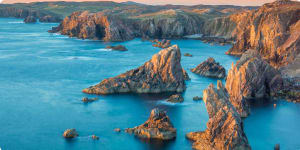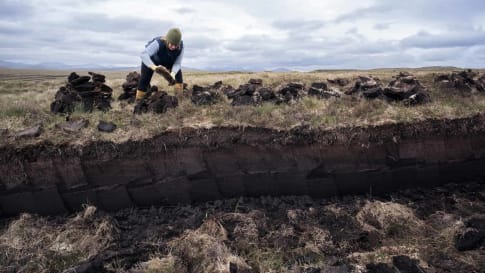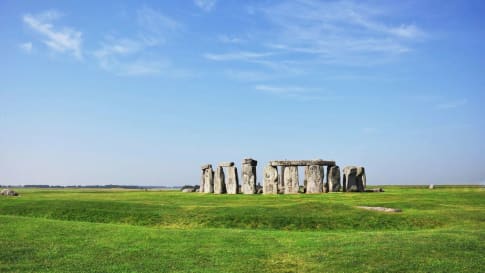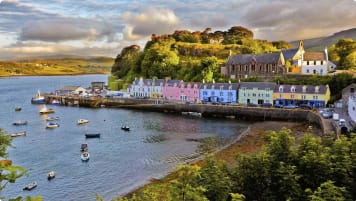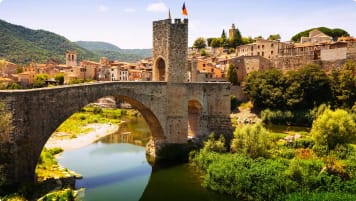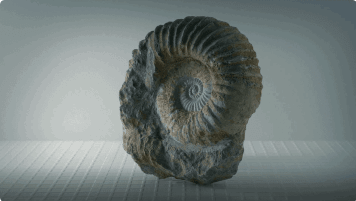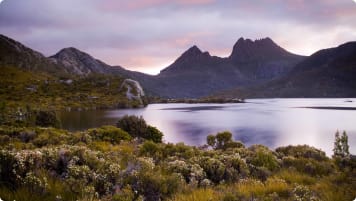Scotland's West Coast small group tour
Explore the West of Scotland, join the gulf stream and visit and spend time with a small group educational tour for senior couples and mature solo travellers visiting with time to explore in depth, Skara Brae, Mull, Iona, Oban and Glasgow and the communities of the Atlantic.
From $19,892CAD
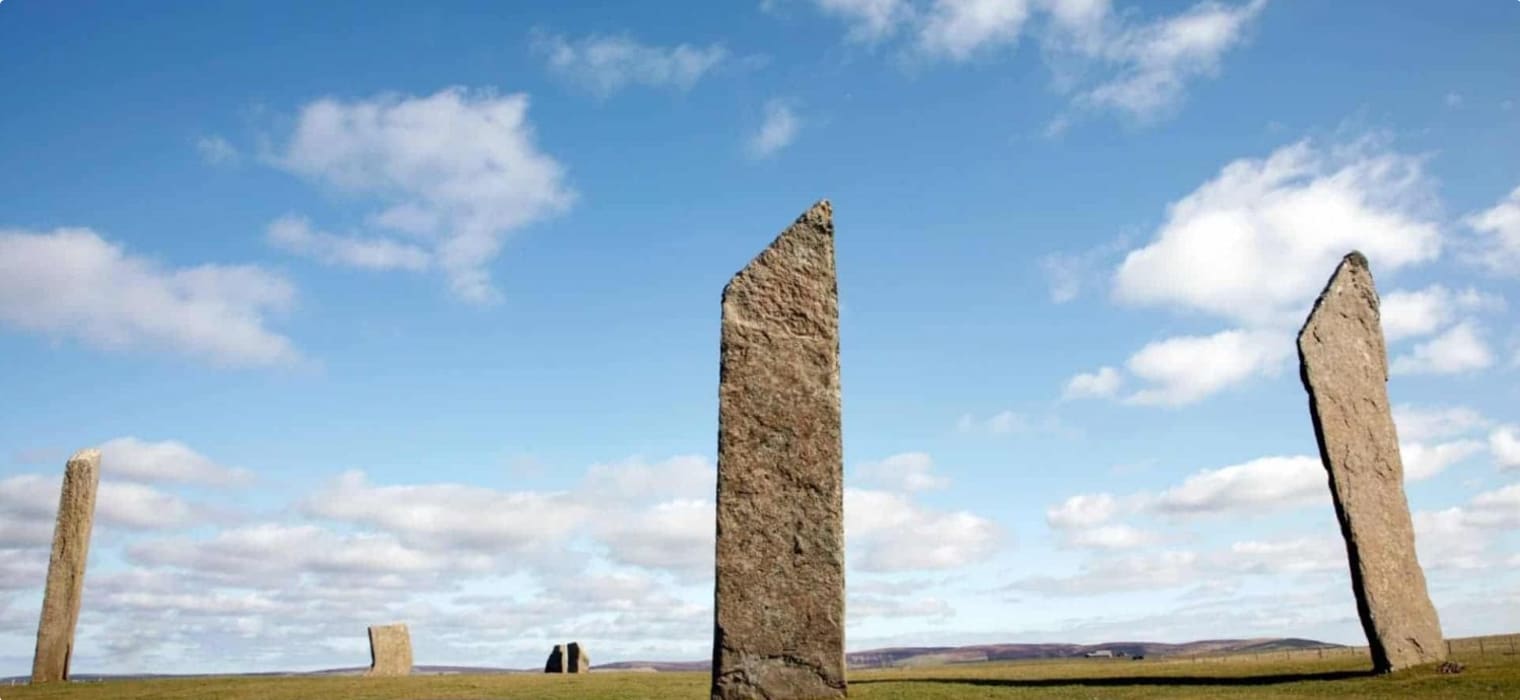
Highlights
- 1. Standing (weather permitting), on the extreme N-W tip of Scotland, next to the Cape Wrath Lighthouse.
- 2. Taking the train from Fort William to Mallaig, one of the world’s most spectacular train journeys
- 3. Visiting historic homes and castles such as Dunvegan, Culzean and Stirling.

Departure Dates
| Departure Date | Price |
|---|---|
| 01 September 2024 Ends 26 September 2024 • 26 days $19,892 Twin $23,030 Single Available | Selected |
| 04 May 2025 Ends 29 May 2025 • 26 days $20,854 Twin $24,182 Single Available | |
| 31 August 2025 Ends 25 September 2025 • 26 days $20,854 Twin $24,182 Single Available | |
| 03 May 2026 Ends 28 May 2026 • 26 days $21,874 Twin $25,388 Single Available | |
| 30 August 2026 Ends 24 September 2026 • 26 days $21,874 Twin $25,388 Single Available |
Best of the West Coast of Scotland
This twenty six day small group tour of Scotland’s West Coast is for the senior couple or mature solo traveller who wants to really explore the beauty of Scotland’s magnificent landscape, particularly in the Highlands and Islands. Our fully escorted tour takes us from the historic Orkney Islands in the north, all the way down to the Mull of Galloway in the far south of the country. On the way we visit the Outer Hebrides, Skye and the Island of Mull. We drive through atmospheric Glencoe, travel around mysterious Loch Ness, and take the famous rail journey between Fort Willian and Mallaig. There will be time to stop to admire lochs and glens, seals, sea eagles and highland cows, lighthouses and historic castles. There may even be time for a dram or two of the famous “Water of Life”, or if you prefer, a cup of tea and a scone in a remote café with magnificent views over the surrounding countryside. There is so much to see in Scotland that this tour will be a little longer than usual though, even then, we have had to be selective.
Go back to the Neolithic period
Our small group tour is for the active senior with an interest in seeing the magnificent scenery and, at the same time, delving into Scotland’s long history. On Orkney Mainland we explore the Neolithic period with visits to the pre-historic village of Skara Brae, the standing stones at at Stenness and the Maeshowe chambered tomb. Time on Orkney, however, has not stood still, as can be seen through its Viking remains, Medieval cathedral, Renaissance Bishop’s Palace, 19th century farmhouse museum and relics from both WWI and II. There is also plenty of history to be uncovered on the mainland, and on the other islands we visit. Iona, off the coast of Mull, is well known as the home to one of the first Christian missionaries to Scotland, while further south, near Portpatrick, the 6th century Romano-Christian grave stones at Kirkmadrine are less well known, but possibly even older. This tour will provide much to surprise you as we travel through land that has been occupied and fought over for thousands of years. (And don’t believe that the Romans never came to Scotland! We’ll see proof of their occupation when we sail right through the remains of the Antonine Wall at Falkirk.)
The West coast landscape of Scotland
Travellers with an interest in natural history and wild life will not be disappointed on this tour either. There are seal colonies on many of the islands and these creatures can often be observed basking on rocks close to the shore. Puffins nest on the cliffs in spring and dolphins often follow our boat as we move between islands. You should also keep an eye out for wild deer and golden eagles, as well as the comical looking Highland Cow. Scotland has large tracts of underpopulated, un-farmed land, and this is likely to be covered in spring and summer with wild flowers, including the dramatic yellow gorse and, of course, the purple heather of folk lore. People often think of Scotland as cold and bleak, but the warm Gulf Stream runs down Scotland’s West Coast, and you may be surprised by the luxuriant gardens to be found at Mount Stuart House on the Island of Bute, at Culzean Castle and Dumfries House on the mid-west coast, and Armadale Castle, on the Island of Skye.
Small group travel with like-minded companions can provide the senior traveller with more than just dramatic scenery, interesting wildlife and fascinating history. On this tour along Scotland’s West Coast, you have the chance to share an evening drink or a chat with new friends over dinner. You can discuss the merits of the Jacobean Revolution, ponder the benefits of the 19th century Caledonian Canal, exclaim over the majestic Ben Nevis, or recall the pleasure of standing beside the windswept Stevenson lighthouse on the mainland’s north-western tip at Cape Wrath. Your Programme Leader will ensure that you have company if you want it, but allow you time to wander in solitary contentment, if that is your preference.
Small group educational tour
This is a tour that has something for everyone, even if they have no Scottish ancestry. The West Coast is wild and rugged, providing wide beaches of stunning white sand, dramatic cliffs, lonely mountain roads and history enough for anyone. Although this is a long tour there will be plenty to keep the senior traveller interested, all the way from Orkney to the Mull of Galloway and then back up to Glasgow where we end our tour.
Gallery



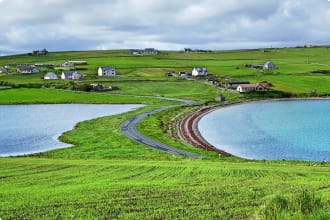
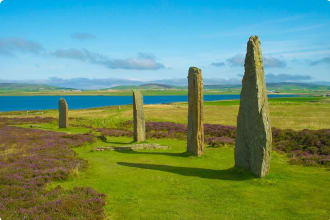
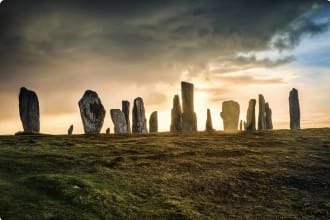
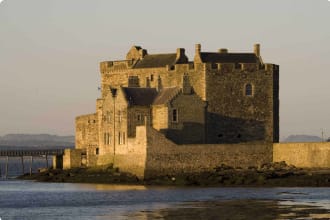

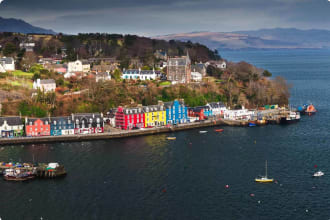
Itinerary
26 days
Day 1: Kirkwall, Orkney
Accommodation: Overnight The Orkney Hotel or similar
Orkney Mainland, four nights in Kirkwall, the island’s capital.
The Orkney Islands, just 10 kilometres of the coast of the Scottish mainland, have been settled for thousands of years. This archipelago boasts the densest concentration of archaeological sites in Britain, and we will have three days in which to explore a number of the most important of these, along with some more recent sites. As well as its Neolithic past, Orkney has a rich history ranging from the age of the Vikings, through to modern times, including a vital role during both World Wars.
This afternoon we meet at our Kirkwall hotel for an introductory briefing followed by a welcome dinner in a local restaurant.
Day 2: Kirkwall, Orkney
Accommodation: Overnight The Orkney Hotel or similar
This morning we take a Kirkwall town tour, including visits to St Magnus Cathedral and the Bishop’s Palace. There will also be time to visit the Kirkwall Museum of Island History.
St Magnus Cathedral known as the ‘Light in the North’ was founded in 1137 by the Viking, Earl Rognvald, in honour of his uncle St Magnus who was martyred in Orkney.
Although this stunning Romanesque cathedral, made from striking red and yellow sandstone, was founded in 1137, it took around 300 years to complete. It was dedicated to Magnus Erlendsson, Earl of Orkney. He shared the earldom with his cousin, Haakon Paulsson, but jealousy and greed culminated in Magnus being martyred on the island of Egilsay. This is the only complete medieval cathedral in Scotland and the only church in the country known to contain the bones of its original saint.
In the afternoon we’ll drive south over the Churchill Barriers to visit the Italian Chapel. Our drive will take us past Scapa Flow, where the German fleet was scuttled at the command of the German Commander at the end of WWI, and over the Churchill Barrier, erected on the command of Winston Churchill during WWII. We’ll visit the chapel erected by Italian POWs during WWII, and still standing on the Island of Lambholm
Day 3: Kirkwall, Orkney
Accommodation: Overnight The Orkney Hotel or similar
Today we spend exploring island history from the 5,000 year old Neolithic village of Skara Brae and the standing stones of Brodgar and Stenness, to the Farm Museum at Kirbuster. At nearby Birsay we visit the palace of a notorious 16th century earl and, tide permitting cross to the tidal island known as the Brough of Birsay, where we might even have the chance to find some puffins.
First uncovered by a storm in the mid 19th century, the Neolithic village of Skara Brae was not fully excavated until 1928-1930. At first the village was thought to date from the Iron Age but Radiocarbon dating in the early 1970s confirmed that the settlement dated from the late Neolithic period and was inhabited for around 600 years between 3,200 BC and 2,200 BC. Not only are the walls of the structures still standing, and alleyways roofed with their original stone slabs, but the interior fittings of each house give an unparalleled glimpse of life as it was in Neolithic Orkney.
Ring of Brodgar.
Because the interior of the Ring of Brodgar has never been fully excavated, or scientifically dated, the monument’s actual age remains uncertain. However, it is generally assumed to have been erected between 2500 BC and 2000 BC, and was, therefore, the last of the great Neolithic monuments built on the Ness. The stone ring was built in a true circle, almost 104 metres wide. Although it is thought to have originally contained 60 megaliths, this figure is not based on archaeological evidence. Today, only 27 stones remain. In contrast to the giant megaliths that make up the Standing Stones of Stenness, the Brodgar stones are much smaller, varying in height from 2.1 metres to a maximum of 4.7 metres.
The farmhouse at the centre of the Kirbuster Farm House Museum was occupied from the mid-19th century until the 1960s before being reopened as a museum in 1986. It’s the last un-restored example of a traditional ‘firehoose’ in Northern Europe, with the house built around a central hearth and peat fire. There is also a stone neuk bed and a peat fire, with the rooms full of old household implements and furniture.
The main farmhouse is surrounded by beautiful stone buildings full of farming equipment and memorabilia. The house also has an example of an Edwardian parlour and Victorian gardens. Kirbuster is a unique survivor which gives a fascinating insight into four generations of family life on Orkney,
Day 4: Kirkwall, Orkney
Accommodation: Overnight The Orkney Hotel or similar
This morning we have a couple of free hours to see a little more of Kirkwall before heading to Maeshowe chambered tomb, followed by Stromness, the island’s largest town, where a visit to the local museum will be included.
Approximately 500 metres from the south-eastern shore of the Harray loch, the Maeshowe chambered tomb is, by far, the largest and most impressive of Orkney’s many chambered cairns. We have no accurate date for its construction, although radiocarbon dates for the surrounding ditch suggests it was dug around 2700BC. It is important to remember, however, this ditch may post-date the chamber by centuries.
During an excavation in 1861, Maeshowe’s entrance passage was inaccessible, so an access shaft was driven down through the top of the mound. Once inside, however, the archaeologists discovered that they were not the first to break into the tomb. Runic “graffiti” found on the inner walls confirmed saga account that several groups of Norsemen had entered the tomb – known to them as “Orkahaugr” – in the middle of the 12th century and recorded their presence on the ancient stone.
Enclosed by the steep Brinkies Brae to the west, and the sea to the east, Stromness is a tumbling network of flagstone streets, lanes piers and slipways. The town stretches for over a mile along the shore of Hamnavoe, an inlet of Scapa Flow sheltered by the islands of Outer Holm and Inner Holm. The core of the town is just one long main street that twists and turns between the shoreline and the hillside behind.
The Stromness Museum is a fabulous treasure trove of history. It contains fascinating artefacts and curios from the past; including wartime items from the ships in Scapa Flow, survival tools for Arctic Explorers and sea chests. It also covers the natural history of Orkney, displaying fossils, shells, birds and more. There is even a segment on Eliza Fraser, shipwrecked off the coast of Queensland in 1836, and her connection with Stromness.
Day 5: Betty Hill
Accommodation: Overnight Bettyhill Hotel or similar
Betty Hill one night.
This morning we leave Orkney and take either the 6.30 am early morning ferry, or the 11 am ferry from Stromness to Scrabster, on the north coast of the Scottish mainland. From there we continue to Betty Hill (or near by) for 1 night. If we catch the early morning ferry there will be time to visit John O’ Groats and/or the Castle of Mey (once owned by the late Queen Mother).
Group Dinner tonight
Day 6: Ullapool
Accommodation: Overnight Caledonian Hotel or similar
Once again we have an early start and a full day as we drive west to Durness, where we visit the infamous Smoo Cave before taking, if possible on the day, the short crossing to Cape Wrath, the most N-W tip of the mainland. We then continue south through spectacular west coast scenery to Ullapool, where we spend the night.
Smoo Cave, close to the tiny village of Durness, is the largest coastline cave in the British Isles. It has provided shelter for thousands of years, with archaeologists dating occupation back to the Mesolithic period. The caves continued to be occupied into relatively recent times, with Norse settlers gathering there to repair boats and fish for herrings. Many legends are connected with the cave including the story of a highwayman called McMurdo who killed his victims by throwing them down the blow-hole into the cave.
In order to get to Cape Wrath we need to take a short ferry ride before being transported by mini bus the eleven miles across moorland to the cape. The whole journey takes about three and a half hours but is weather dependent. If we can get to Cape Wrath the views are spectacular, and we have the bonus of seeing one of the Robert Stevenson lighthouses, built in 1828.
In the afternoon we continue south through spectacular scenery to Ullapool where we spend the night.
Group Dinner tonight
Day 7: Stornaway
Accommodation: Overnight The Royal Hotel or similar
Today we head for the Outer Hebrides, spending three nights in Stornaway, the main town on Harris and Lewis.
This morning we catch the ferry from to Lewis. We have the afternoon free to walk around Stornaway, visit the castle and, possibly, time to drive out to the “Bridge to No Where”, built by Lord Leverhulme as part of his failed plan to revolutionise life on the island.
Picturesque Stornaway has a population of around 6000 and is by far the largest town in the Outer Hebrides. Stornaway was founded by the Vikings in the 9th century, but the Hebridean culture goes back much further, as testified by the circles of standing stones that are found on the island, and shards of pottery dating as far back as 3,000 BC. There are remnants of various historic periods on the island including the traditional “Blackhouses”, some of which were in use as late as the 1970s. Lews Castle, overlooking the town, is a more modern copy of a Tudor manse, and was built by a former 19th century owner of the island.
Day 8: Stornaway
Accommodation: Overnight The Royal Hotel or similar
Today we spend exploring pre-historic as well as historic Lewis, including the Standing Stones of Callanish, the Carloway Broch, and the Black House Museum. There should even be time to take a trip to the island of Great Bernera, where cows often sun bake on beautiful Bosta Beach, close to a reconstructed Iron Age House.
The Standing Stones of Callanish (or Calanais) are an extraordinary cross-shaped setting of stones erected some 5,000 years ago, predating England’s Stonehenge. They were an important part place for island ritual for at least 2,000 years though their exact purpose remains unknown.
Dun Carloway.
Brochs, such as Dun Carloway on Lewis, are found only in Scotland, particularly on Shetland, Orkney and Lewis, as well as on the mainland. No body knows exactly why the brochs were built, possibly for defence in an unsettled time. This broch, still standing an impressive 9 metres in height, was probably constructed about 200 BC. Broch building ceased around AD 100, though they may have continued in use as late as around AD 1000.
At the far end of the village of Arnol, also on the west coast of Lewis, is the Black House Museum. It will help us to understand something of the way of life once widespread in the islands. A blackhouse usually comprised a long narrow building, often with one or more additional buildings laid parallel to it and sharing a common wall. The walls were made from an inner and outer layer of unmortared stones, the gap between them filled with peat and earth. The roof would be based on a wooden frame, resting on the inner stone wall, giving the characteristic wall-ledge. Over the frame would be laid an overlapping layer of feathery turves, and over this a layer of thatch. The thatch would be secured with an old fishing net or by twine attached to large rocks whose weight held everything down. More rocks would be laid around the bottom of the roof, where it met the inner wall.
Day 9: Stornaway
Accommodation: Overnight The Royal Hotel or similar
This morning we head south to the Harris end of the island, as far as Leverburgh, and then circle around via medieval St Clement’s Church, and the Golden Road back to Stornaway.
Harris is the less fertile, less populated end of the island, with magnificent white sandy beaches and rocky shore lines. This is mostly a day for admiring the scenery, but there are a couple of places of historical interest to be visited.
Leverburgh, formerly called “An t-Ob”, was renamed by Lord Leverhulme, who had purchased the entire island of Harris and Lewis in 1918. Leverburgh was intended to be the centre of a vast fishing empire but, on Lord Leverhulme’s death in 1925, the project came to nothing and the village fell back into obscurity. Leverburgh has recently seen something of a revival with the addition of a ferry port which links Harris with the Hebridean islands to the south.
St Clements Church at Rodel was built from around 1520 by Alexander MacLeod of Dunvegan and Harris. The church fell into disuse and disrepair in 1560, after the Reformation, but was restored by the Countess of Dunmore in 1873. The tower was restored after being struck by lightning in 1907. The church, now in the care of Historic Scotland, is widely thought to be the grandest medieval building in the Outer Hebrides.
The Golden Road takes us along the east coast of Harris from Rodel back up to Tarbet where we re-join the main road. The south east coast is deeply indented by lochs and contains some of the rockiest scenery anywhere in Scotland. For much of its history the many tiny settlements along the coast were accessible only by boat, but in 1897 a road was constructed to link the settlements. The high cost of the road, through such difficult terrain, is thought to have caused it to be called “The Golden Road”.
Day 10: Portree
Accommodation: Overnight The Bosville or similar
This morning we leave Stornaway and drive south again to Tarbet, where we catch a ferry to Uig on the Island of Skye, which has been populated since the Mesolithic era. From Uig, after a visit to Fairy Glen, we drive north to the tip of the island, and then down the scenic east coast to Portree, the island’s capital.
The cone shaped hills and odd rock formations of the Fairy Glen are believed to have been formed by a landslip. Over the following centuries the dramatic landscape was then shaped and smoothed by glacial movement during the next ice-age.
As we drive down the east coast we pass through some of Scotland’s most dramatic scenery. The most photographed highlight of the island is the Old Man of Storr, a magnificent pinnacle of rock, rising to 49 metres, that is visible for miles around. A combination of ancient lava flows and landslides, the Old Man of Storr is part of the Trotternish Ridge, which continues behind it.
Portree, the largest town on Skye, was created as a fishing village at the beginning of the 19th century by the then Lord MacDonald. The town is set around a natural harbour and the colourful houses lining the shores make for some great photographs. This afternoon you’ll have time to explore the town.
Day 11: Portree
Accommodation: Overnight The Bosville or similar
This morning after breakfast we set out to explore more of the north of the island. We drive via Skeabost to Dunvegan Castle where we take a guided tour of the castle which has been the seat of the chiefs of the Clan MacLeod for over seven centuries.
We return to Portree via the west coast of the island with a stop to visit the Talisker Distillery at Carbost.
Day 12: Portree
Accommodation: Overnight The Bosville or similar
Today we spend exploring the south of the island, including Armadale Castle Gardens and the Museum of the Isles.
On our way south we’ll detour to take a closer look at the Black Cuillin and Red Cuillin Ranges. The Black Cuillin Ridge was formed 60,000,000 years ago and is all that remains of an eroded magma chamber of a huge volcano. Weathering over the millennia has created the jagged character of the Ridge. The Red Cuillin Range is made mainly of granite which has weathered to give the rounded appearance of the hills.
Armadale Castle, the last ancestral home of the Macdonalds of Sleat, is now operated by the Clan Donald Lands Trust. Here we can explore 40 acres of historic gardens and woodland walks around the romantic ruins of the castle, and enjoy stunning views across the Sound of Sleat to the mountains of Knoydart.
The mild climate created by the Gulf Stream sea-current and the sheltered aspect make the gardens a gardener’s paradise. The estate is also home to the award-winning Museum of the Isles, where you can discover the history of the Highlands and Islands through the story of Clan Donald. The estate is home to iconic wildlife species including red deer, golden eagles and sea eagles.
We return to Portree in the early afternoon with time to rest or explore.
Day 13: Fort William
Accommodation: Overnight Alexandra Hotel or similar
This morning we leave Skye and drive across the Skye Bridge to the mainland. We’ll have time to detour along the way to Fort William with stops at Plockton, Eilean Donan Castle and, possibly, the Iron Age Brochs at Glenelg.
The picturesque village of Plockton, a short drive from the Skye Bridge, boasts a superb location on sheltered Loch Caron, surrounded by a ring of hills. The neatly painted cottages of the village are arranged around the curve of the bay, making this one of the prettiest villages in Scotland. (Plockton was also the setting for the 1990s TV series Hamish Macbeth.)
The medieval castle of Eilean Donan was destroyed by government troops in 1719 after they defeated a defending garrison of Spanish troops. The 46 Spanish soldiers had assembled in support of the Catholic Jacobite cause, but were overwhelmed by the English. The gun powder they had collected was used to blow up what remained of the castle after the English bombardment.
For the best part of the next 200 years the castle lay in ruins until Lt Colonel John Macrae-Gilstrap bought the island and the castle in 1911. He spent the next 20 years reconstructing the castle to its former glory. The castle was rebuilt according to the ground plan of earlier phases, and reconstruction was finally completed in July 1932.
In the afternoon we arrive in Fort William, where we spend the next three nights. Fort William, although not very exciting itself, is a great base for exploring the Western Highlands. It is the largest town in the Highlands and, situated at the southern end of the Great Glen, it lies in the shadow of Ben Nevis, Britain’s highest mountain.
Day 14: Fort William
Accommodation: Overnight Alexandra Hotel or similar
This morning we take the train to Mallaig where we meet the coach and drive back via Glenfinnan and Neptune’s Staircase (a series of eight locks on the Caledonian Canal).
Often described as one of the world’s greatest rail journeys, the 84 mile trip between Fort William and Mallaig, takes us past a list of impressive extremes. Starting near Ben Nevis, the train visits, Arisaig, Britain’s most westerly railway station, passes close by Loch Morar, the deepest freshwater loch in Scotland, Morar, the shortest river in Britain, and finally arrives at Mallaig on Loch Nevis, the deepest seawater loch in Europe. The train also crosses the 21-arched Glenfinnan viaduct (a location made famous in the Harry Potter films) which overlooks Loch Shiel and the Jacobite monument.
The return journey by coach allows us to stop at the Jacobite monument with the chance visit the museum or climb to the lookout for a good view of the viaduct.
On our way back to Fort Willian we will also stop at the series of locks known as Neptune’s Staircase. This amazing feat of engineering raises the Caledonian Canal by 19 metres over a quarter of a mile of continuous masonry. It takes around 90 minutes for a boat to travel up or down the locks. Designed by Thomas Telford, who also designed the canal, and built between 1803 and 1822, it is the longest staircase lock in Scotland.
Later this afternoon there may be time to drive along beautiful Loch Linnhe to Castle Stalker, for afternoon tea overlooking the castle.
Day 15: Fort William
Accommodation: Overnight Alexandra Hotel or similar
Today we take a circular drive around beautiful Loch Ness to Inverness, returning to Fort William via Aviemore.
Loch Ness, surrounded by hills, contains more water than all the lakes of England and Wales combined, making it the most voluminous lake in the UK. This corner of the Highlands is world-famous for its dramatic scenery as well as for the tales of the large monster living deep beneath the dark expanses of the loch. These tales have circulated since the first “photograph” emerged in 1933, and although we’re unlikely to catch a glimpse of Nessie, the scenery will make the journey worthwhile all the same.
Urquhart Castle on the shores of Loch Ness, although a ruin, is one of the most visited castles in Britain. The castle has medieval roots and was garrisoned from the 1200s. From then on until 1692 it was fought over many times. It was garrisoned for the last time in 1689, following the exile of the Catholic King James VII, and his replacement by the Protestant monarchs William II and MaryII. In 1692 the towering gatehouse was deliberately blown up so that the castle could never again be a military stronghold.
Loch Ness.
We visit Inverness, and then continue through Aviemore and the Cairngorms, on our way back to Fort William. Although Aviemore is better known as a winter sports resort, there is still much to admire during the rest of the year.
Day 16: Oban
Accommodation: Overnight Royal Hotel Oban or similar
This morning we leave Fort William and take a rather circuitous route to Oban via Glencoe, Tyndrum and St Conan’s Kirk on Lochawe. From Oban we take the afternoon ferry to Tobermory, the main town on the island of Mull.
Located within the awe-inspiring Lochaber Geopark, the deep valley and towering mountains of Glencoe were carved out centuries ago by icy glaciers and volcanic explosions. Glencoe is known for its tragic past as well as its wild beauty. The infamous massacre that took place here in 1692 is a poignant chapter in Scottish history, and a key moment in the story of the Jacobite rebellions.
Saint Conan’s Kirk, located beside beautiful Lochawe, is one of the most popular places to visit in Argyll. From the road the Kirk gives few clues about its amazing architecture, both inside and out. Designed and built by local landowner, Walter Douglas-Campbell, the Kirk is unique in having an example of almost every style of church architecture. Highlights include the Norman doorway, the Gothic flying buttresses, a Celtic cross, the Arts and Crafts carvings, the Saxon tower and even a Stone circle. There is a surprise at every turn! In addition, Walter commissioned some of the finest craftsmen to help decorate the interior. The lochside gardens offer stunning views over the Loch.
Day 17: Tobermory
Accommodation: Overnight Park Lodge Hotel or similar
We catch the early morning ferry to Mull and then onto Tobermory.
There will be time to explore picturesque Tobermory this morning, before touring the northern part of the island. We’ll visit Calgary Bay, then take a sail (weather permitting) from Ulva Bay out to Staffa and Fingal’s Cave, followed by a visit to the Macquarie Mausoleum.
Calgary Bay, on the North West coast of Mull, is a white sandy beach backed by machair. Machair is found only on the west coasts of Scotland and Ireland where calcium rich sandy soils create a unique habitat rich in flower species and grasses.
The small island of Staffa is the result of volcanic activity that occurred 60 million years ago during the the early formation of the Atlantic Ocean. The island’s six sided columns of rock are formed from basalt, the same as the Giant’s Causeway in Northern Ireland. Fingal’s Cave, on Staffa, was immortalised by the composer Mendelssohn in his Hebrides Overture, after he visited the cave in 1829.
Governor Lachlan Macquarie, governor of NSW between 1810 and 1821, was born on the island of Ulva, off the coast Mull. He was buried on Mull in 1824. The mausoleum, erected over his tomb, is cared for by the National Trust for Scotland on behalf of the National Trust of Australia.
After visiting the mausoleum we return to Tobermory.
Day 18: Tobermory
Accommodation: Overnight Park Lodge Hotel or similar
This morning we travel to the south of Mull to visit Iona, the tiny island which has been described as the birthplace of Christianity in Scotland. St Columba and twelve companions went to Iona from Ireland in AD 563. The monastery they founded was one of the most important and influential in the British Isles, sending missionaries to northern Britain to convert the people to Christianity.
Little remains of the original monastery. St Columba’s shrine, a small stone building beside the door of the modern abbey church, may date from the 9th or 10th century. By this time Viking raids blighted Britain, and raids on Columba’s monastery were a frequent occurrence. Early in the 9th century some of the saint’s relics were taken to Dunkeld, in Perthshire, and Kells, in Ireland, for safekeeping. The famous Book of Kells, now on display in Dublin, was probably made on Iona.
The layout of Iona Abbey follows that of a traditional monastery, with a cloister walk adjoining the church, although in this case the cloister is (unusually) sited on the north side of the church. Very little remains of the original medieval cloisters, what we see today was rebuilt in the 1950s and 60s.
We return to Tobermory in the afternoon.
Day 19: Inveraray
Accommodation: Overnight Park Lodge Hotel or similar
One night in Inveraray
This morning we leave Mull and return to the mainland via the ferry to Oban. From Oban we drive south as far as Inveraray. On our way south we stop at historic Kilmartin, and at the fishing village of Crinan at the end of the Crinan Canal.
Kilmartin Glen spans some 5,000 years of history and, with its multitude of of cairns, standing stones, carved rock, stone circles, forts and castles, the glen is considered to have one of the most important concentrations of Neolithic and Bronze Age remains in Scotland. There are more than 350 ancient monuments within a ten kilometre radius of Kilmartin village, with 150 of them being prehistoric. Monuments also include a henge monument, numerous forts, and a ‘linear cemetery’ comprising five burial cairns. The remains of the fortress of the Scots at Dunadd, a royal centre of Dal Riata, are located to the south of the glen, on the edge of the Moine Mhor, or The Great Moss.
The New Kilmartin Museum and Visitor Centre will be opened in 2023.
The Crinan Canal.
From Kilmartin we continue south to the picturesque Crinan Canal which starts at Ardrishaig on Loch Fyne, and ends at Crinan on the Sound of Jura. The canal was designed to provide a quick link between the west coast and islands at one end, and the Clyde Estuary at the other. This would avoid the long voyage around the south end of the Kintyre Peninsular.
Work started on the canal under engineer John Rennie and it was opened in 1801. It was two years late, significantly over budget, and not properly finished. Early problems with water levels and collapsing locks and reservoirs led to Thomas Telford being asked to redesign parts of the canal in 1816. The locks were again reconstructed and deepened in the 1930s.
We’ll drive along the side of the canal to the fishing village of Crinan with time to explore the village before we head back along the canal, and on to Inveraray.
Inveraray, overlooking Loch Fyne, is a traditional Argyllshire country town. It was established by the 3rd Duke of Argyll, head of the powerful Clan Campbell, in 1745, and is a set piece of Scottish Georgian Architecture. The duke demolished the original village to give his rebuilt castle more space, rehousing the population in the new town.
Day 20: Ayr
Accommodation: Overnight Fairfield House Hotel or similar
We leave Inveraray this morning and head south again to spend a night in Ayr, on the south coast.
We travel to Ayr via the Isle of Bute, with a stop to visit the amazing Mount Stuart mansion, rebuilt by the eccentric, and very rich, third Marquess of Bute.
John Crichton-Stuart, 3rd Marquess of Bute, was born on the 12th of September 1847 and died on the 9th of October 1900. He is remembered as a scholar, historian, archaeologist, romantic, mystic, patron of the arts, and the richest man in Britain at the time.
Born at Mount Stuart, the family home on the Isle of Bute, he inherited his title and a vast fortune when only six months old. His mother died when he was twelve, and he was sent to boarding school in England and then to Oxford by his emotionally detached guardians. At the age of twenty one he assumed control of the family estates, with much of his money coming from coal mines in Wales.
The 3rd Marquess used his wealth and influence to produce a series of spectacular developments and restorations, mostly in the Neo-Gothic style. He is best known for his restoration of Cardiff Castle and the fairy tale reconstruction of Castell Coch, both in Wales. His most important work in Scotland
is probably the rebuilding of Mount Stuart on Bute. The family home burned down in 1877, and the Marquess had it rebuilt, in a most spectacular style.
From Bute we take another ferry to Wemyss Bay, where we’ll pause to take a look at the railway station with its extraordinary glass ceilings. The present station and adjoining pier were built in 1903, the first of Clyde railway piers to be built, and the last remaining. This Edwardian masterpiece well deserves its Category A architectural listing, with graceful curves and elegant glass canopies still protecting passengers.
From Wemyss Bay we take the coast road through the seaside resort of Largs, to Ayr, passing Troon, best known for its golf course, on our way.
Day 21: Portpatrick
Accommodation: Overnight The Corsewall Lightouse Hotel or similar
This morning we continue south along the coast towards Portpatrick, after a detour to visit Dumfries House, and the Robert Burns Museum at Alloway.
Dumfries House, designed by the Adam brothers, Robert, John and James, was completed in 1759 for Willian Crichton-Dalrymple, 5th Earl of Dumfries. The Earl hand-picked the finest furniture from the workshop of Thomas Chippendale, creating one of the finest interiors of the Scottish Enlightenment. At one time the house was lived in by the 3rd Marquess of Bute, who died there in 1900. By 2007 the house was surplus to Crichton-Stuart family requirements and was offered for sale with the furniture to be sold separately. At the last moment a consortium, led by HRH The Prince of Wales, stepped in and purchased house and contents. In so doing they preserved one of Britain’s most important collections of Georgian Scottish and English furniture in its original setting. The house is set in some 2,000 acres of superb garden which is also open to the public.
At Alloway we’ll visit the Robert Burns Birthplace Museum which offers a unique encounter with one of Scotland’s favourite sons. Burns is Scotland’s National Bard, and his poetry and songs are known the world over. The Burns museum reveals a great deal about his life and character.
From Alloway we continue to Culzean Castle.
Culzean Castle’s 260 hectare estate was once the playground of David Kennedy, 10th Earl of Cassillis. He was a man keen to impress with his wealth and status and his castle and grounds reflect this aim. The park is planted with conifers and beech, sculpted around miles of sandy coastline dotted with caves, and finished off with a Swan Pond, an ice house, flamboyant formal gardens and fruit filled glasshouses.
The castle itself is perched on the Ayrshire cliffs, incorporating everything the Earl could wish for in his country home. It was designed by Robert Adam in the late 18th century and is filled to the turrets with treasures that tell the stories of the people who once lived there. It was a no expense spared project, but neither Kennedy nor Adam survived to see the castle completed, as both died within a few months of each other in 1792, shortly before the castle was completed. In 1945, when the castle was passed to the National Trust for Scotland, the top floor was converted into a flat for the use of General Eisenhower, as a gesture of thanks for America’s support during WWII. General Eisenhower visited the castle four times, including once while president of the United States of America.
We end our day in Portpatrick, with dinner in a local restaurant.
Day 22: Portpatrick
Accommodation: Overnight The Corsewall Lightouse Hotel or similar
There will be time this morning to explore the picturesque fishing village of Portpatrick before we take a scenic drive down to the Mull of Galloway to visit another (Stevenson) lighthouse, and check out the early Christian burials at Kirkmadrine.
The Logan Botanic Gardens, on our way south, provide us with the chance to see just what exotic plants can be grown in this mild climate. Plant treasures from Central and South America, South Africa and Australasia, all flourish here.
Day 23: Glasgow
Accommodation: Holiday Inn Glasgow City Centre Theatreland or similar
This morning we head north again to Glasgow via Kirkcudbright (home of artist E. A. Hornel), and New Lanark (a model factory village).
Kirkcudbright was established as a Royal Burch in 1455 and has always been supported by a busy fishing trade. Behind the harbour, however, the streets have long housed generations of creative artists. This tradition is still maintained today and Kircudbright is often called “The Artists Town”.
One of the town’s best known artists is E. A. Hornel, and we will take the opportunity to visit his home. Broughton House and Garden stands in the heart of Kirkcudbright. This impressive museum, combining both original interiors and exhibition spaces, is dedicated to Hornel’s life and work as an artist, collector and antiquarian.
Hornel, one of the early 20th century Glasgow Boys, bought this impressive building in 1901 and transformed it into his studio and sales room as well as his home. Hornel was one of the colourists with an eye for sensual detail and many of his works still hang in the house, along with those of his contemporaries. His gallery, constructed in 1910, is one of the finest rooms in south-west Scotland. Outside, Hornel and his sister designed a beautiful garden, with sweeping views over Kirkcudbright harbour and the River Dee.
From Kirkcudbright we continue to New Lanark. World Heritage listed New Lanark is an exceptional example of a purpose-built 18th century mill village, set in a picturesque Scottish landscape near the Falls of Clyde. Here, in the early years of the 19th century, the Utopian idealist Robert Owen (1771-1858), inspired a model industrial community based on textile production. Owen applied his form of benevolent paternalism in industry at New Lanark, building on the altruistic actions of his father-in-law, David Dale. It was here, too, that he formulated his Utopian vision of a society without crime, poverty, and misery. New Lanark prospered under his enlightened management. The village is well preserved and well worth a visit.
This afternoon we reach Glasgow.
Day 24: Glasgow
Accommodation: Holiday Inn Glasgow City Centre Theatreland or similar
Today we have time to explore the city of Glasgow, once the second city of the British Empire. We start the morning with a city tour, which includes the cathedral, the university, and Kelvin Grove Art Museum. There is so much to see in this fascinating historic city.
Glasgow Cathedral is the only medieval cathedral on the Scottish mainland to survive the the Protestant Reformation virtually intact. It is one of the finest buildings of any kind still surviving in Scotland from the 12th century, and parts of it are older still.
This afternoon we visit the new transport museum. Riverside Museum is the first purpose-built museum created by Glasgow Life in the 21st century. Located at the junction of the Rivers Kelvin and Clyde, it houses the city’s fabulous transport and technology collections, which have been gathered over the centuries, and which reflect the important part Glasgow has played in the world through its contributions to heavy industries like ship building, train manufacture and engineering.The museum was designed by internationally renowned architect, Dame Zaha Hadid, It opened in 2011 after a four-year build and houses 3,000 objects from the city’s world famous collections.
Day 25: Glasgow
Accommodation: Holiday Inn Glasgow City Centre Theatreland or similar
On our final day of sightseeing we’ll take a full day excursion away from the city to visit the Falkirk Wheel, The Kelpies and Stirlin
The Falkirk Wheel is the world’s only rotating boat lift. It was designed to replace the eleven locks which once linked the Forth & Clyde and the Union Canals, once again allowing coast to coast navigation across central Scotland.
The magnificent wheel stands 115 ft tall and requires only the power of eight domestic kettles to sail boats through the air and transfer them between the two canals. The Falkirk Wheel has not only been described as a feat of engineering, but as a work of art. We will take the boat lift and ride right through the Roman Antonine Wall!
The Kelpies, at 30 metres tall, tower above everything around them. They were built to pay homage to the working horses of Scotland which used to pull barges along Scotland’s canals, and worked in the fields in the area where they now stand. Standing over a new canal extension, which links the Forth & Clyde Canal to the North Sea, the Kelpies are the result of the collaboration between the canal partners and the Glasgow based artist, Andy Scott. Named for Scottish mythical water spirits, The Kelpies project took almost 10 years to complete.
Most of Stirling Castle dates back to the period between 1496 and 1583, and to the efforts of three kings, James IV, V and VI and one of their queens, Mary of Guise. The castle had, however, provided a home for Scottish kings and queens from the days (at least) of Alexander I, who died 1124, until the Union of the Scottish and English Crowns under James VI, in 1603.
During its long and bloody history Stirling Castle has been attacked or besieged at least sixteen times and three major battles have been fought in the vicinity. A number of Scottish Kings and Queens have been baptised, crowned or died in or near Stirling Castle. At least one Scottish king was murdered nearby, while another committed murder within its walls.
Recently the Great Hall of the castle has been restored to its full glory with the exterior lime-washed to golden brilliance. The interior of the fabulous palace, built for Mary of Guise, has also been restored, with colours so bright that it almost hurts to look at them. The new tapestries are particularly wonderful, as are the restored ceiling bosses.
We drive back to Glasgow via Loch Lomond.
Our farewell dinner tonight will be in a local restaurant.
Day 26: Glasgow
Our tour concludes after breakfast.
Includes / Excludes
What’s included in our Tour
- 26 nights of hotel accommodation.
- 26 breakfasts and 16 dinners.
- All entry fees and services of local expert driver/guide.
- Cruises, ferry crossings, field trips, and excursions as indicated.
- Touring by comfortable and modern mini-coach.
- Services of a Tour Leader for the duration of tour.
- Gratuities and necessary tips.
- Detailed preparatory information.
What’s not included in our Tour
- Return airfare and departure taxes.
- Comprehensive travel insurance.
- Items of a personal nature, such as telephone calls and laundry.
- Porterage.
- Meals not specified in the itinerary.
Participants must be able to carry their own luggage, climb and descend stairs, be in good health, mobile and able to participate in 3-5 hours of physical activity per day, the equivalent of walking / hiking up to 8 kilometers per day on uneven ground.
Book now
Make it a private tour
Easing your journey
Crossing international borders with restrictions
The list of requirements to travel internationally has changed and will continue to change for several years. Odyssey is here to assist you in managing your way through these requirements:
For more information see our Crossing international borders with restrictions page.
Book With Confidence
If less than 30 days before your tour starts you are unable to travel as a result of Government travel restrictions, Odyssey Traveller will assist you with a date change, provide you with a credit or process a refund for your booking less any non-recoverable costs.
See Terms and conditions for details.
Peace of Mind Travel
The safety of our travellers, tour leader, local guide and support staff has always been our top priority and with the new guidelines for public health and safety for keeping safe for destinations around the world, we’ve developed our plan to give you peace of mind when travelling with us.
See Peace of Mind Travel for details.
Reviews
It was good to spend so much time in one country. It was also good having stays of 3-4 nights and not a series of one-night stands. Watching puffins prepare their nests was the highlight. J. Amey May'23
Reading List Download PDF
A History of Ancient Britain
Neil Oliver
Continues Neil Oliver's landmark exploration of how our land and its people came to be, which began with the acclaimed A History of Scotland.
In the Footsteps of Sheep: Tales of a Journey Through Scotland, Walking, Spinning, and Knitting Socks
Debbie Zawinski
In the Footsteps of Sheep details the completion of a mission the author, a Welsh-born Scot, set for herself: to travel and camp throughout Scotland, find cast off tufts of wool from 10 Scottish sheep breeds, then spin the wool on her spinning stick while walking (or waiting for ferries), and finally design and knit one pair of socks to represent each breed...all the while writing about her adventures and taking plenty of photographs. Debbie has written beautifully about her journey; the hills, shorelines, and bogs explored; the sheep and people she met along the way; weather both foul and fair, and a particularly exciting chapter about the intriguing St Kilda archipelago and its feral Soay and Boreray sheep. The eleven sock patterns, one at the end of each chapter, are a bonus and, for those of us unable to gather and spin our own fleece, all were test-knitted with commercial wool. The designs are knitted from top to toe with different motifs, among them color-patterns, cables, spirals, stripes, Kilt Hose with top-turnovers, and a pair of baby booties.
The Hebrides: By the presenter of BBC TV's Grand Tours of the Scottish Islands
Paul Murton
Paul Murton has spent half-a lifetime exploring some of the most beautiful islands in the world - the Hebrides. He has travelled the length and breadth of the Scotland's rugged, six-thousand-mile coast line, and sailed to over eighty islands.
In this book Paul visits each of the Hebridean islands in turn, introducing their myths anc legends, history, culture and extraordinary natural beauty. In addition he also meets the people who live there and learns their story. He has met crofters, fishermen, tweed weavers, Gaelic singers, clan chiefs, artists, postmen and bus drivers - people from every walk of life who make the islands tick. This blend of the contemporary and the traditional creates a vivid account of the Hebrides and serves as unique guide to the less well known aspects of life among the islands.
Whisky: Malt Whiskies of Scotland
Dominic Roskrow
This beautifully presented Little Book is an excellent introduction to the world of Scotch whiskies. It includes the major Scotch whiskies and the distilleries that produce them.
The book includes details of the very best of Scottish single malts and deluxe whiskies, covering Speyside (Cardhu, Glenfarclas, Glenfiddich) the Highlands and Islands (Blair Athol, Glenmorangie, Talisker), to Islay (Ardbeg, Laphroaig), the Lowlands (Auchentoshan, Glenkinchie) and Campbeltown (Glen Scotia). It is completely up-to-date, including new Scottish distilleries which have yet to bottle spirit or establish a core product.
What’s more, an introduction exploring the current whisky boom and how distilleries are coping with this surge in demand makes this attractive Little Book a great introduction for anyone looking to learn about whisky.
Wild Guide Scotland: Hidden places, great adventures & the good life
Kimberley Grant
A new compendium of adventures, from the best-selling Wild Guide series (winner of travel guidebook of the year 2015). This guide to Scotland and the Scottish highlands and islands, one of Europe's fastest growing adventure holiday destinations, explores the hidden parts of its better known tourist areas, as well many more remote regions, rarely visited by tourists. Guiding you to over 800 wild swims, ancient forests, lost ruins and hidden beaches. Including inns, wild camping, local crafts, artisan whisky distilleries and wild places to stay.
The Scottish Islands: A Comprehensive Guide to Every Scottish Island
Haswell-Smith, Hamish
Fully revised and updated and liberally illustrated with the author's own paintings, this beautiful guide will take readers to every Scottish island, whether by armchair or yacht. From the abandoned crofts of Mingulay and the standing stones of Orkney to the white beaches of Colonsay and the spectacular Cuillins of Skye, this is the first complete gazetteer to cover all of Scotland’s many hundreds of islands, including those which are uninhabited and those which are notoriously difficult to reach. Packed with information on access, anchorages, points of historical or natural interest, and things to do and see, this fascinating compendium provides indispensable information for touring, for browsing, for reference, and for all of those travelers who wish to experience some of the most beautiful and remote places in the world. No other book begins to emulate the range and depth of the information contained in The Scottish Islands. Complete with the author's own paintings, full-color illustrations, and relief maps of all the main islands, this is both an impressive work of reference and a fascinating personal view of Scotland’s distant outposts.
